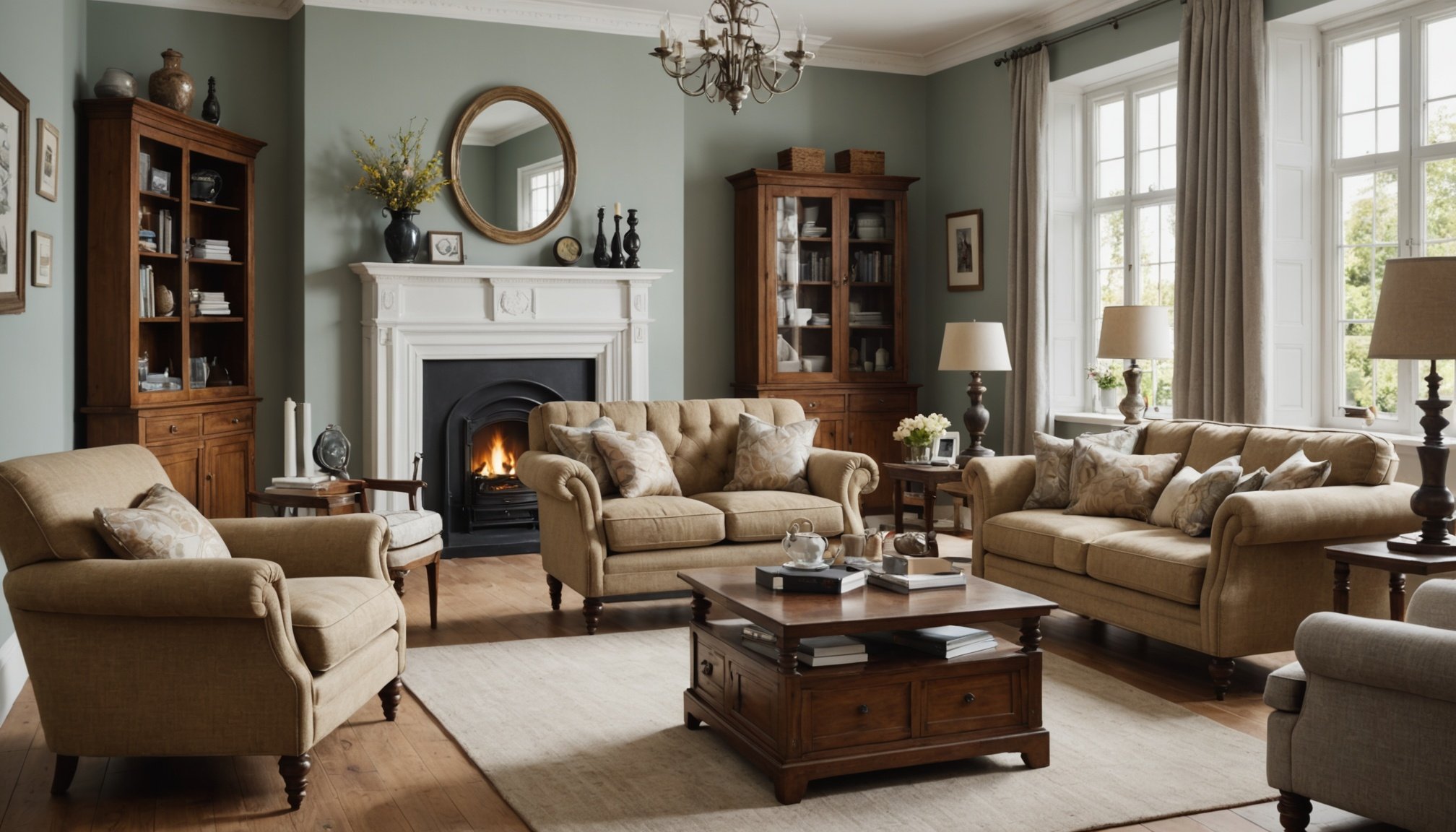Overview of Selling Unwanted Furniture in the UK
Selling furniture before moving offers both monetary and practical benefits. Not only can you alleviate moving costs, but it also simplifies the logistics by reducing what needs to be packed and transported. In the UK, the furniture market is vast, offering diverse opportunities for selling unwanted pieces.
One of the primary considerations when selling furniture is understanding its value retention. Generally, well-crafted pieces, especially those from reputable brands, tend to hold their value better. This highlights the importance of assessing furniture with a realistic eye, noting its condition, brand, and unique features. Regular maintenance can further aid in preserving value over time, making items more appealing to potential buyers.
Cela peut vous intéresser : Smart and Sustainable: Eco-Friendly Ways to Dispose of Old Electronics Before Your Move in the UK
However, the process isn’t without challenges. Sellers often face difficulties such as mismatched buyer expectations and fluctuating market demands. The UK furniture market can be competitive, and setting the right price requires careful consideration of current trends. It’s vital to engage in research, leveraging platforms like online marketplaces to gauge similar items’ going rates.
Understanding these dynamics allows sellers to navigate the UK furniture market effectively, maximising their earnings and ensuring a smoother transition during a move. By staying informed, sellers can tackle common obstacles with confidence.
Avez-vous vu cela : Essential Insights for Moving Into a Historic Listed Building in the UK
Online Marketplaces for Selling Furniture
Selling furniture online offers convenience and access to a broad audience. Popular online marketplaces such as eBay and Facebook Marketplace provide diverse platforms for this purpose. Navigating these spaces effectively can help maximise your sales potential.
Overview of Popular Platforms
eBay is a global platform known for its auction feature, allowing sellers to potentially get higher prices. However, it charges listing and selling fees, so understanding the platform’s fee structure is crucial. Facebook Marketplace offers a more localised selling experience, often free of charge, and simplifies communication through Facebook Messenger.
Creating Effective Listings
To maximise visibility, your listing should include clear, high-quality images and a detailed description of the furniture’s condition, dimensions, and features. Keywords describing style and brand will help your listing appear in searches. Use competitive pricing based on research of similar items, ensuring you attract potential buyers.
Safety Tips for Transactions
For secure transactions, understanding fees and policies is essential. Platforms like eBay provide buyer protection, which adds a security layer to purchases. For Facebook Marketplace, meet in well-lit, populated places, or consider using secure payment methods like PayPal. Be upfront about transaction terms to maintain transparency. Ensuring buyer safety and secure payments builds trust and encourages successful sales.
Utilizing Local Classifieds and Community Boards
Engaging with your local community can be a cost-effective and efficient way to sell items. Using local classifieds such as Gumtree, and participating in community boards ensures that your items receive visibility without the complications of long-distance logistics. Let’s dive into the benefits and strategies for using these platforms effectively.
Benefits of Local Selling
Opting for local selling through community boards and platforms like Gumtree offers advantages, such as quick transactions and no shipping hassles. This approach not only saves time but also reduces costs associated with packaging and postage. Additionally, face-to-face interactions often enhance trust between buyers and sellers, facilitating smoother deals.
How to Write Compelling Ads
Crafting a compelling ad is crucial. Use clear, straightforward language to highlight key features and benefits of your item. Ensure to include attractive images and fair pricing. Vivid descriptions can capture attention and communicate value effectively, thus maximizing interest in your listing.
Engaging with Your Local Community
Tapping into local networks through word-of-mouth can significantly boost your reach. Participate actively on community boards to build rapport and increase exposure. Being present and responsive enhances credibility and might lead to repeat interactions. By integrating local classifieds and community engagement, sellers can foster meaningful connections while efficiently moving their items.
Donation Options for Unsold Furniture
When looking to donate furniture, it’s wise to start by identifying reputable charities and organisations that can benefit from your contribution. Not all charities have the capacity to accept large items like furniture, so it’s necessary to contact them directly to understand their capacity and need. Well-known organisations such as The Salvation Army, Goodwill, and Habitat for Humanity often accept furniture donations and are equipped to handle them.
Donating furniture doesn’t just clear out your space – there are potential financial benefits too. Many donations are eligible for tax deductions, enabling donors to claim a portion of the furniture’s market value on their annual taxes. To ensure you receive this benefit, it’s crucial to get a receipt from the charity and itemize the deduction when you file taxes.
Logistics for arranging a donation can vary. Some charities offer convenient pick-up services, making it effortless if you’re unable or unwilling to transport the items yourself. However, if pick-up is not available, you’ll need to consider the logistics of delivering the furniture. Planning a date and ensuring the items are clean and ready for transport can smooth the transition, making it more likely the donation process proceeds without a hitch.
Tips for Staging and Presenting Furniture
Making furniture photogenic is crucial when it comes to selling. The way you stage and present your items can significantly impact a buyer’s perception. Incorporate these strategies to enhance your listings and attract potential buyers.
Importance of First Impressions
In the world of selling furniture, first impressions matter. A potential buyer’s decision is often influenced by how appealing your furniture looks at first glance. This can be achieved through thoughtful staging and compelling presentation. Consider the room’s layout in which the furniture is placed, and ensure consistent themes or colours to draw attention.
Cleaning and Repairing Furniture
Before photographing, it’s important to clean and repair your furniture to maintain its perceived value. Simply dusting and polishing surfaces can make a big difference. Look for any minor repairs that can be done to fix scratches, tighten screws or secure loose elements. These small efforts can enhance the overall appearance of your furniture, making it more enticing to buyers.
Photographing for Listings
Photographs are the most effective way to showcase furniture online. Employ techniques to improve visual appeal, like using natural light to minimise harsh shadows and ensuring photogenic angles. Avoid clutter in the background to keep the focus on your furniture. High-quality images with attractive staging can significantly increase the chances of a sale.
Pricing Strategies for Quick Sales
When aiming for swift sales in the furniture market, it’s crucial to employ effective furniture pricing strategies coupled with insightful valuation and negotiation techniques.
Researching Market Prices
To kick-start the process, researching market prices is indispensable. Gain a comprehensive understanding of your item’s worth by examining similar sales locally and online. Tools like pricing calculators and auction history databases can provide solid ground for valuation. Knowing the typical price range aids in setting competitive prices.
Setting Competitive Prices
Positioning your furniture to sell quickly demands setting competitive prices. Price slightly below average valuations to attract immediate attention. This encourages potential buyers to see it as a bargain, prompting faster transactions. Remember, valuation should reflect both the item’s condition and market demand.
Handling Offers and Negotiations
Mastering the art of handling offers and negotiations involves being both assertive and flexible. Prepare for negotiations by setting a minimum acceptable price. Engage buyers by highlighting key features that justify your pricing, but also be ready to adjust to close the deal.
- Use valuation tools to guide discussions.
- Offer minor incentives to sweeten the transaction.
- Keep an open mind to counter-offers.
Adopting these strategies ensures a balanced, effective approach to achieving quick sales in the competitive furniture marketplace.
Managing Logistics for Selling Furniture
Managing the logistics of selling furniture involves careful planning and coordination to ensure everything goes smoothly. From arranging transportation to planning pickups or deliveries, each step requires attention to detail.
Arranging Transportation
Selecting the right furniture logistics solution is crucial for successful sales. Evaluate various delivery options, such as hiring a moving service or renting a vehicle. If you’re on a budget, consider informal methods like posting on social platforms to find people willing to help with the move. Regardless of the method, prioritize options that offer insurance or damage guarantees to protect your items during transit.
Planning for Pickup or Delivery
Decide whether potential buyers will pick up the furniture or if it will be delivered. For those opting for delivery options, arrange necessary transportation in advance. Establish clear communication with buyers about pickup times and locations, ensuring both parties have a mutual understanding of the logistics. If choosing a moving service, verify their availability and reliability to avoid last-minute complications.
Timing Your Sales
Aligning sales with your moving schedule can reduce stress and overlap. Begin selling items well before the move, allowing adequate time to manage any last-minute changes or issues. Consider setting up convenient exchange points near your residence to streamline the process for all parties involved. This strategic planning can enhance the experience for both sellers and buyers.











